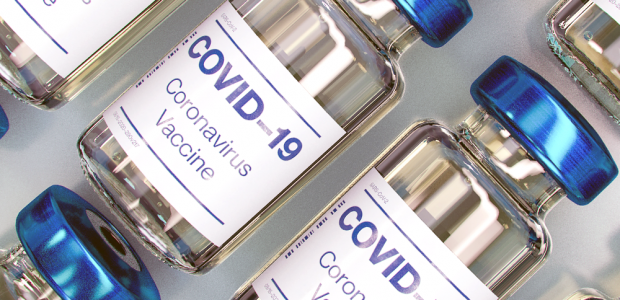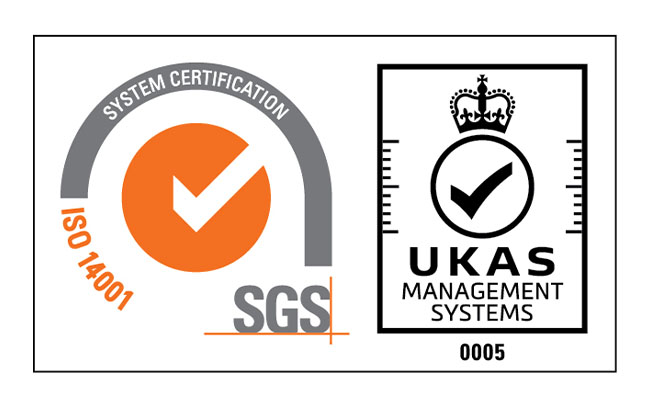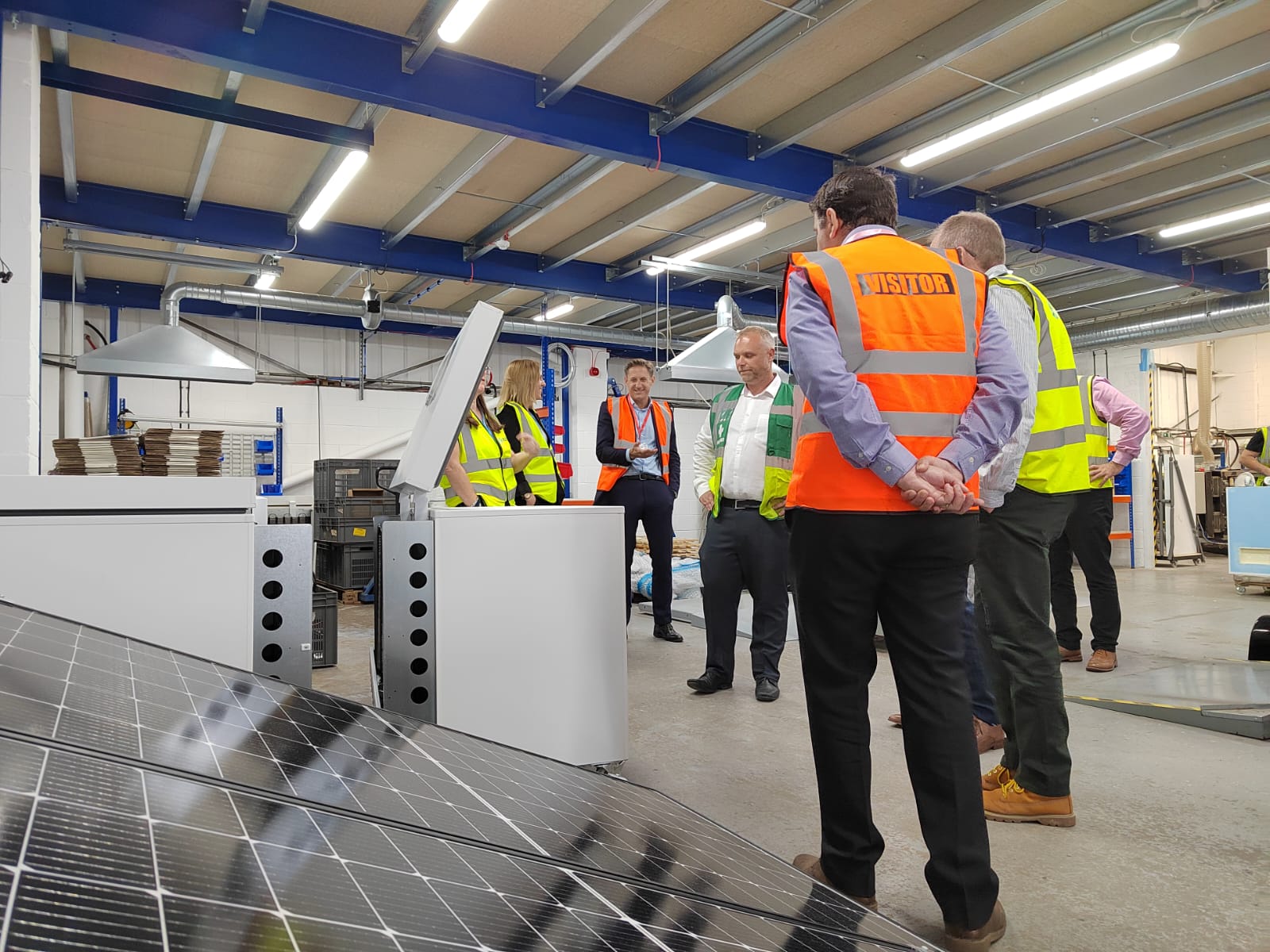In a year of bad news, the recent announcements of successful trials for various vaccines to fight COVID-19 have come as a welcome boost. It looks as though we will soon have an arsenal of effective vaccines to protect us from the pandemic and get our lives back to normal. How many people, though, fall within ‘we’ and ‘us’? Is there a danger that some people will miss out, either because their governments lack the money to buy sufficient doses, or because the infrastructure needed to get the vaccines to them is not in place?
The issue around the infrastructure needed to support vaccine distribution was discussed in a recent episode of the BBC World Service’s ‘Business Daily’ programme, in which Our Senior Technical Consultant, David Elliot, was asked about the logistical problems involved.
He explained that ‘The potential COVID vaccine is a massive step up in scale. About 115 million children per year are currently immunised globally. Now we’re looking to immunise most of the global population in the next 12 to 24 months. If we want to be able to deliver those vaccines, we need to be putting the cold chain in place now. There has been so much focus on vaccines, but are there enough cargo planes to transport the vaccine, enough technicians to install the equipment, enough nurses…even enough glass to make the vials to hold the vaccine? The answer is no. We are trying to do something on a scale that’s never been done before, and we need to ramp up the planning and investment so that we can do it.’
What is clear from the vaccines for which successful trials have already been announced is that some pose even more infrastructure challenges than others.
The first to declare
First to announce the completion of a successful trial was Pfizer, who have worked with BioNTech to develop an mRNA vaccine. Rather than using a weakened version of the virus itself, mRNA vaccines are constructed from genetic code. When injected into the body, these create harmless viral proteins that stimulate the body’s immune response. Manipulating genetic material in this way enables new vaccines to be produced more quickly than traditional vaccines, where the virus has to be isolated and a safe hybrid cultivated.
(Ultra) Cold comfort
However, the Pfizer/BioNTech vaccine comes with a major drawback: it can only be stored long-term at temperatures of around -70ºC. Freezers that operate at these temperatures are expensive to purchase and run, and are not even found in all hospitals, let alone local medical practices. And ensuring there is sufficient capacity to store doses of vaccine in the numbers required is only part of the problem: distribution also has to be done at very low temperatures. Huge manufacturing and distribution centres in Belgium and the USA with multiple ultra-cold freezers are already in operation, and others are under construction. Pfizer has also developed specially designed storage containers that when loaded with dry ice can hold and store several thousand vials of the vaccine for a maximum of 10-15 days. Once transferred to refrigerators, they must be administered within five days.
The logistical challenges that come with the Pfizer vaccine are therefore immense, even for developed countries. In other parts of the world with far less medical infrastructure, they are almost insurmountable. There would therefore be a real danger of billions of people being unable to access this vaccine. Gavi, the global vaccine alliance, has stated that a -70ºC vaccine is not a viable option for large scale distribution, especially when the need for it may only be short term as there are other vaccines close to readiness.
Other vaccines fast to follow
Although Pfizer could claim kudos from announcing the first viable vaccine, and enjoy first-to-market position, positive announcements from other developers quickly followed. Less than a week later, US company Moderna announced that human trials of its own vaccine had proved successful. Like the Pfizer one, theirs is an mRNA type, but it is apparently more stable, and can be stored at -20ºC for up to six months. This would make distribution somewhat simpler and cheaper, but would still need to be stored in freezers rather than refrigerators. An additional drawback is that the cost per dose of the vaccine itself is nearly double the Pfizer one.
Even easier to store, and considerably cheaper, are more traditional ‘viral vector’ vaccines that involve modifying the virus itself into harmless variants that generate an immune response. The Oxford University / Astra Zeneca vaccine is perhaps the most promising of all at this stage. Initially, it was described as 90% effective, matching the Pfizer and Moderna vaccines, but unlike those vaccines, the full trial data have been published. These show efficacy of over 70%, but also suggest that adjusting the doses may improve this to over 90%. (Even 70% is extremely good for a brand-new vaccine – around 50% would normally be considered a worthwhile result.) As well as proving its general effectiveness, the data show that this vaccine has excellent results in older age groups, whose immune systems often respond less well to vaccines. It can be stored at normal refrigerator temperatures and should be relatively inexpensive as Astra Zeneca has committed to producing the vaccine on a not-for-profit basis for as long as the pandemic lasts.
In all, there are at least another fifty different vaccines that are already undergoing clinical trials in humans, so the chances are high of a range of options becoming available, including several that will not require ultra-cold storage.
This bodes very well for potential distribution of the vaccine in lower-income countries with limited cold chain infrastructure.
COVAX
The other big problem for lower-income countries is a lack of money with which to buy vaccines and set up cold chain infrastructure.
Countries representing more than two-thirds of the world’s population have signed up to the COVAX scheme, which will give them all equal access to vaccines. The higher-income countries will self-finance the vaccines bought through COVAX, while lower-income countries will receive funding via Gavi COVAX AMC (Advance Market Commitment). By mid-November, the initial target for 2020 of $2 billion in pledges had been achieved, enabling one billion vaccine doses to be secured for the 92 lower- and middle-income participants.
The structure of COVAX, with self-funded and AMC-funded participants, will help to ensure a more equitable distribution of vaccine doses than would be achieved otherwise.
The advantages for the lower and medium income participants is self-evident, but it also serves the interests of higher-income, self-funding participants. The more people are immunised globally, the less chance there is of future flare-ups of the virus. COVAX also offers advantages of low cost through its significant buying power. It has already built a portfolio of vaccines, including a pre-order of 300 million doses of the Oxford University / Astra Zeneca vaccine.
Could COVAX be undermined?
Perhaps unsurprisingly, many of the wealthier self-funding countries have put in separate preliminary orders outside the COVAX mechanism for several of the vaccines in development. Some, including Canada, the USA, the UK and the EU, have ordered sufficient doses to immunise their entire populations several times over. On the one hand, this is perhaps a reasonable hedge against some of the vaccines failing to be approved, but it creates a real danger that demand will outstrip supply and the lower-income countries will be squeezed out, notwithstanding their participation in COVAX.
Dulas applauds the COVAX initiative and hopes that its mechanisms will ensure an equitable vaccine distribution. COVID-19 is a global problem and overcoming it requires co-ordinated global action. With our proud history of nearly 40 years supporting vaccine efforts across the world we are prepared, alongside the rest of the cold chain community, to rise to this challenge. We have expansion plans ready to implement that will ensure our solar refrigerators can play their part in meeting this new need.
Sources / Further info
BBC World Service: What it takes to vaccinate the world
The trial results from the Oxford University / Astra Zeneca vaccine trials have been published in The Lancet.
The New York Times publishes an excellent virus tracker, where progress of the multiple ongoing trials is regularly updated.
Gavi’s COVAX scheme.
Duke Global Health Innovation Center keeps track of which countries have pre-ordered doses of which COVID-19 vaccines via its Launch and Scale Speedodometer








